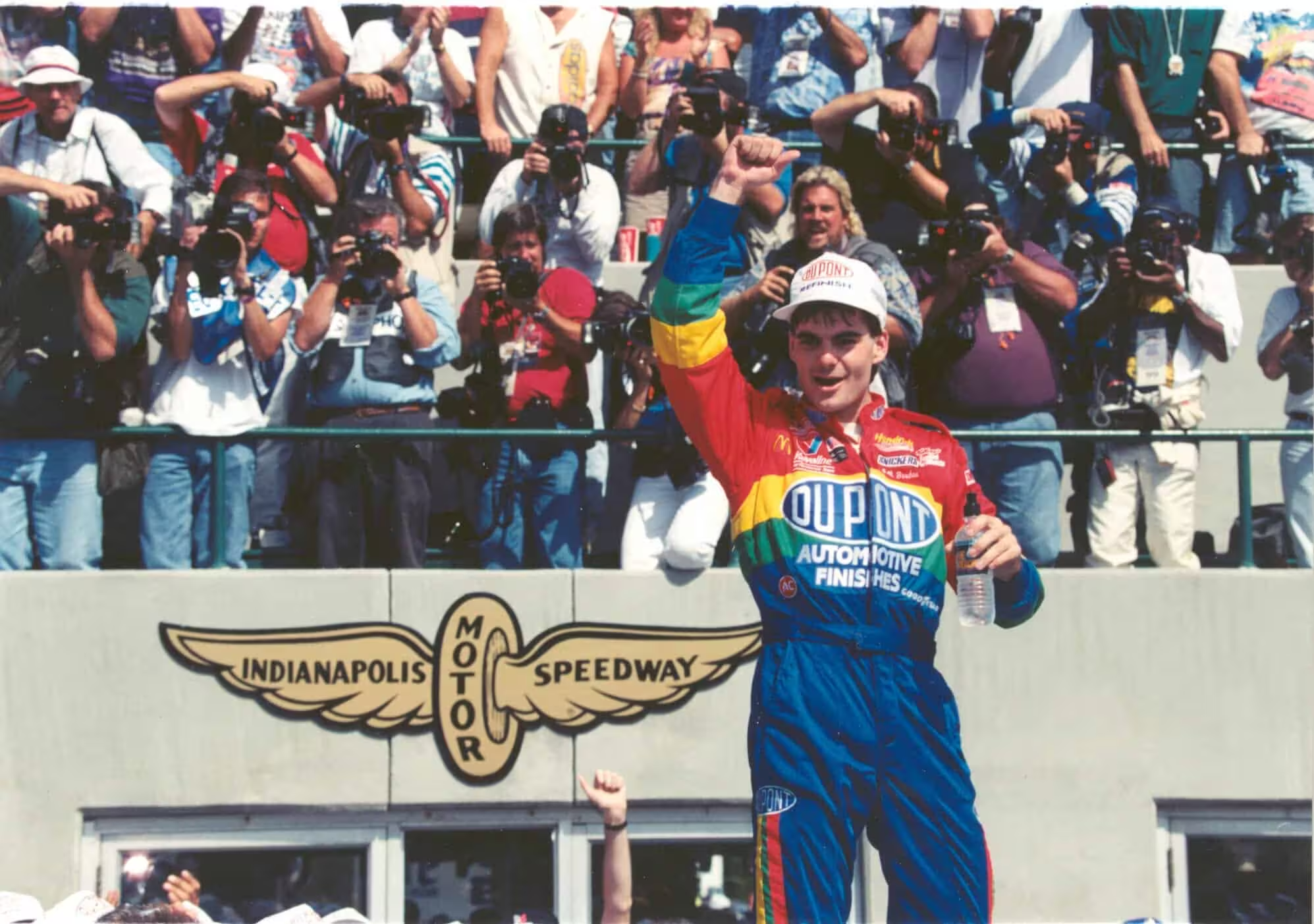It was a win that launched a young Indiana racer on a legendary career path and placed one name next to Ray Harroun in the history books.
That was Jeff Gordon’s win at the 1994 inaugural Brickyard 400.
While he may have crossed the Yard of Bricks first, behind him and for the previous 160 laps, every driver vainly tried to challenge Gordon.
Everyone wanted to win it.
The significance of the moment dawning on the field of 43 drivers on the morning of August 6, 1994, hasn’t been replicated often in motorsports history. It’s not easy to point to a moment and say, “I was there, I participated,” knowing that history was made. Normally, hindsight provides the narrative that turns one event into a moment that builds a foundation for generations.
The inaugural Brickyard 400 was a historic moment in NASCAR’s long lineage, introducing the long-time southern sport to the masses who sheltered in what was then heavily IndyCar country. It was a visceral sight, as the great stock car teams were lining up to battle it out over the two-and-half-mile oval, with each driver thirsting insatiable to be the man holding the PPG Trophy at the end. That driver would forever be held in regard as NASCAR’s version of Harroun, the man who won the inaugural Indy 500 in 1911.
This race was supposed to be just another stop on the schedule, regardless of it’s open-wheel lineage. However, the aura of the Speedway was impossible to prevent from seeping into the minds of everyone involved. This was lining up to be one of the greatest stock car moments in history, a race that could (and quite frankly did) propel NASCAR to new heights and more national attention, and it spurred further growth.
There was immediate prestige that tracks like Las Vegas Motor Speedway and Kansas Speedway could never provide. This was the Speedway, hallowed ground where the past echoed off the aluminum bleachers. Instead of names long associated with the May Classic, like Al Unser, Mario Andretti and Rick Mears, it was joined by famous stock car brethren: Richard Petty, Rusty Wallace and Dale Earnhardt.
Then, in the middle of all that was a young 23-year-old Gordon, who had made a name for himself on the Indiana dirt tracks and other venues across the Midwest. Not from racing modifieds or street stock divisions, but United States Auto Club’s open wheel cars, the sprint, midget and Silver Crown series. With the road to Indy long blocked off for…
Click Here to Read the Full Original Article at …

